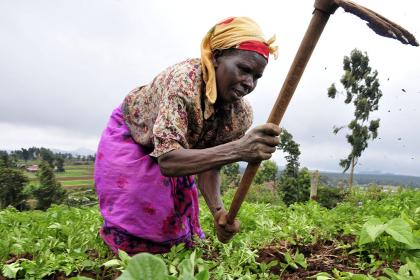
The global financial and economic crisis highlight the urgent need to move beyond business as usualand, through concerted international action, foster more stable and inclusive global development. Thecrisis has been a sober reminder that economic and social imbalances and inequalities, both withinand between countries, if left to correct themselves, are likely to produce damaging and destructiveoutcomes, particularly for vulnerable countries and communities. This Report focuses on the boombustcycle of the past decade in the least developed countries (LDCs) and offers alternatives for thecoming decade.
Even as global economic growth accelerated in the first decade of the millennium, the LDCs remainedmarginal in the world economy owing to their structural weaknesses and the form of their integrationinto the global economy. The number of people living in absolute poverty in these countries hascontinued to rise, even during the boom years of 2002–2007, and progress towards achievement ofthe Millennium Development Goals has remained very slow. The Report calls for the creation of a newinternational development architecture (NIDA) for the LDCs aimed at: a) reversing their marginalizationin the global economy and helping them in their catch-up efforts; (b) supporting a pattern of acceleratedeconomic growth and diversification which would improve the general welfare and well-being of alltheir people; and (c) helping these countries graduate from LDC status.
The Report argues that these objectives can be achieved if there is a paradigm shift that supports new,more inclusive development paths in LDCs. This requires the State to play a more developmental rolein creating favourable conditions for job creation, capital accumulation, technological progress andstructural transformation. The NIDA should be designed to facilitate the new development paths. TheReport shows, through alternative policy scenarios, that accelerated growth and poverty reduction areachievable through policy changes.
The NIDA for LDCs is defined as a new architecture of formal and informal institutions, rules and norms,including incentives, standards and processes, which would shape international economic relations ina way that is conducive to sustained and inclusive development. It would be constituted through: (a)reforms of the global economic regimes which directly affect development and poverty reduction inLDCs; and (b) the design of a new generation of special international support mechanisms (ISMs) forthe LDCs aimed at addressing their specific structural constraints and vulnerabilities. Increasing South-South international flows of trade, FDI, official finance and knowledge also implies that South-Southcooperation, both within regions and between LDCs and large, fast-growing developing countries,could also play an important role in a NIDA for LDCs.
The Report proposes five major pillars of the NIDA: finance, trade, commodities, technology, andclimate change mitigation and adaptation. At present, the focus of support for LDCs is mainly in the areaof trade. This Report identifies a forward-looking agenda for action in the NIDA for LDCs in all five areas.It is intended to serve as a major input to the policy debate for the fourth United Nations Conferenceon Least Developed Countries to be held in Turkey in 2011. Combining international support measuresfor LDCs with a new international framework for policy and cooperation that can deliver more stable,equitable and inclusive development is one of the most urgent challenges facing the internationalcommunity today.




